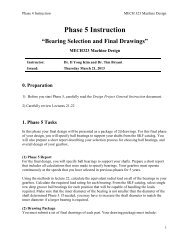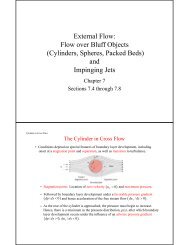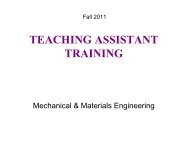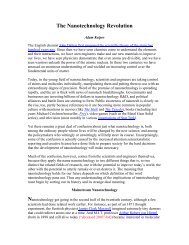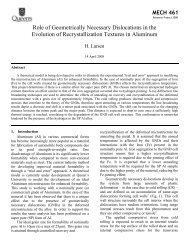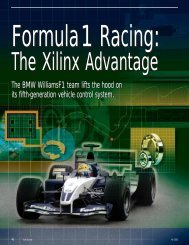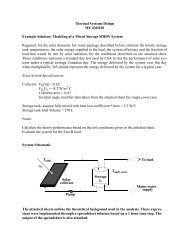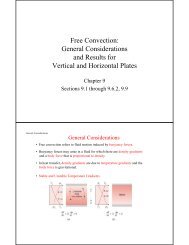Numerical Study of Passive and Active Flow Separation Control ...
Numerical Study of Passive and Active Flow Separation Control ...
Numerical Study of Passive and Active Flow Separation Control ...
Create successful ePaper yourself
Turn your PDF publications into a flip-book with our unique Google optimized e-Paper software.
Fig. 5. Streamline <strong>of</strong> steady flow past a circular cylinder<br />
Table 1. Comparison <strong>of</strong> present result with other computational/experimental results<br />
L a b θ CD<br />
Present result 2.25 0.759 0.589 53.9° 1.53<br />
Linnick & Fasel [22] 2.28 0.72 0.60 53.6° 1.54<br />
Coutanceau & Bouard [8] 2.13 0.76 0.59 53.8° ⎯<br />
Fornberg [10] 2.24 ⎯ ⎯ 55.6° 1.50<br />
To further test the feasibility <strong>of</strong> simulating active vortex generator with the immersed<br />
boundary method. A numerical simulation <strong>of</strong> flow behind a pair <strong>of</strong> active vortex<br />
generators over a flat plate was performed [33] <strong>and</strong> satisfactory agreement was found<br />
when the numerical results were compared with experimental data [34]. Fig. 6 shows the<br />
contours <strong>of</strong> instantaneous streamwise velocity behind the vortex generators at their fully<br />
deployed <strong>and</strong> retracted positions during the first working duty cycle. In Fig. 6(a), the<br />
large scale streamwise vortical structures created by the vortex generators can be seen on<br />
the cross-sections (y-z plane). On x-y plane, the high-speed streaks appear at the<br />
downwash side <strong>of</strong> the streamwise vortices that bring high momentum fluid into the near<br />
wall region. In Fig. 6(b), the streamwise vortices disappear in the immediate downstream<br />
region after the vortex generators are fully retracted.<br />
12



